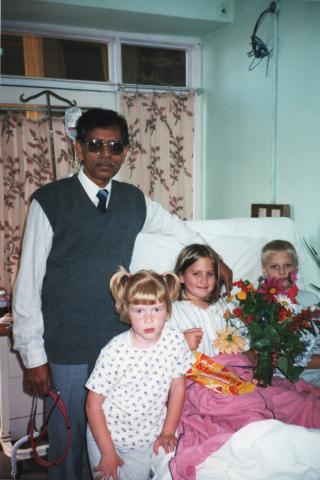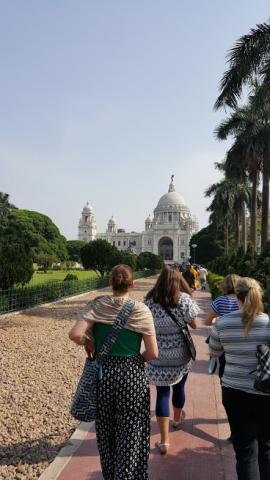by Ryn Wiebe, Development and Communications Associate
Just before heading to Kolkata, India, for my first full-team training visit to a Children’s HeartLink partner hospital, I got one last email from my dad. He wished me safe travels and “a little bit of adventure” and ended with “You are the fifth generation of your family to work in India. We are as proud as can be.”

My ancestors Tina and Daniel F. Bergthold
In 1904, the first of my family traveled to India by steamer ship, and finally arrived in Hyderabad in a matter of time better framed in months than weeks. In the moments I found my own trip to be arduous or uncomfortable, I reminded myself that I was in an airplane seat for a few hours–with movies and anti-malaria pills and a plentiful supply of clean water. It might take an adventurous streak to make such a long journey now, but back then it took an indomitable spirit to make an almost inconceivable journey.
Although my family has historically been drawn to India for missionary work, my purpose in Kolkata was to learn about our partner hospital Rabindranath Tagore International Institute of Cardiac Sciences (RTIICS). Children’s HeartLink is a catalyst organization that improves access to quality care for kids with heart defects. Along with an excellent (and fun!) team of doctors and nurses from Children’s Hospitals and Clinics of Minnesota, I got the chance to see what our work looks like as it’s happening, instead of my usual view–from my desk in Minneapolis, Minnesota. RTIICS is an advanced hospital in India, with a surgical caseload maybe three times larger than what our best hospitals here handle, but RTIICS inevitably runs into problems of space, resources and time.
We all share a common driving force: helping more kids survive and thrive. It only makes sense that we find ways to collaborate to achieve that goal.
On a previous trip to India when I was 9 years old, I found myself in need of an emergency appendectomy. At the time, my grandparents lived in the mountain town of Kodaikanal in Tamil Nadu, and I was driven to the small hospital where, incidentally, my great aunt was born quite a few years earlier. When the hospital team brought me in for surgery, I remember looking around through the fog of my very high fever and thinking: “This does not look like an operating room. This just looks like a regular room.” Clearly my surgery was successful and I lived to travel another day, but I experienced firsthand how essential quality surgical care is no matter where, or who, you are. Like heart defects, you can’t prevent emergency appendectomies, you can only hope that you’ll have access to the care you need when you need it.
 From left: Dr. Anand, cousin Hannah, me (post-surgery), cousin Matt
From left: Dr. Anand, cousin Hannah, me (post-surgery), cousin Matt
I don’t take care of patients, and I do not perform open heart surgery, but my experiences help me broaden the audience for, and understanding of what we call: The Need. The Need for quality surgical care, for pediatric cardiac specialists, for sharing with others around the world what we have and what we’ve learned using our resources and opportunities. This past year access to surgery was included in the United Nations Sustainable Development Goals. I consider myself extremely fortunate to have the chance to work with so many knowledgeable and passionate people who are on the frontlines making that goal become a reality. I am as proud as can be of the work we are doing together.

In Kolkata with the medical volunteer team from Children’s Hospitals and Clinics of Minnesota.
